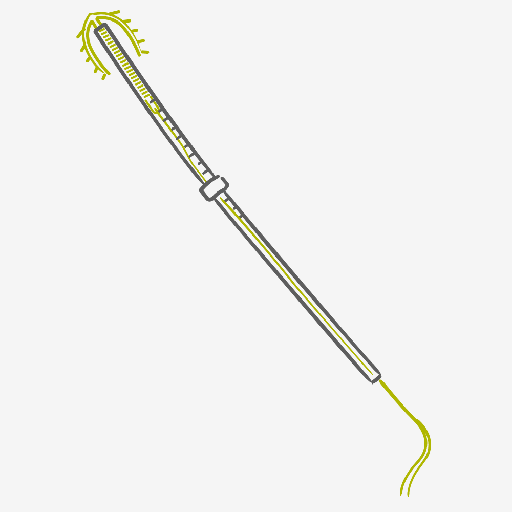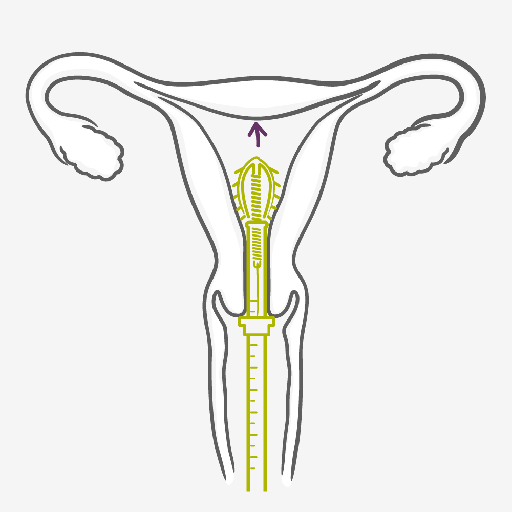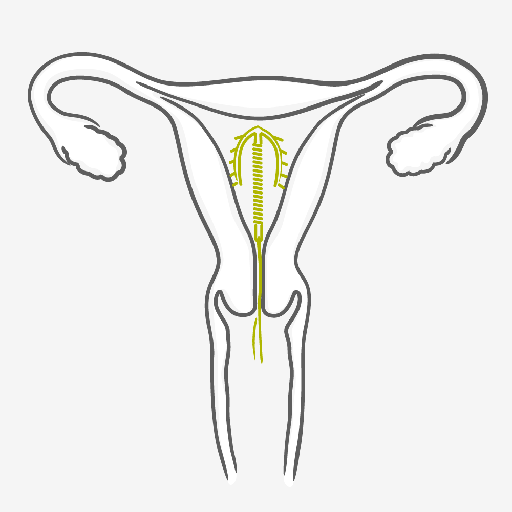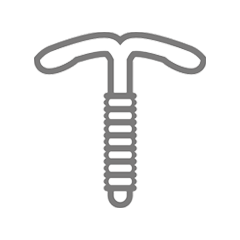COPPER COIL (IUD)
WHEN and HOW?
The copper coil (IUD) is highly effective - the efficacy is 99% with typical use.
How is the copper coil (IUD) inserted?
The IUD can only be inserted by a well-trained healthcare provider once every 5 to 10 years depending on the type. Once your healthcare provider has made sure the copper coil (IUD) is a suitable method for you based on your medical history and you’ve decided to use it, there really isn’t much to do.
- The healthcare provider will use an applicator tube to insert the copper coil through the cervix into your womb. The insertion of the IUD should not take longer than 5 minutes.
- You can of course change your mind at any point and your healthcare provider will simply take it out again for you.
- After the IUD is removed, the contraceptive effect wears off quickly and you can become pregnant as rapidly as women who have used no contraceptive at all.
The copper coil (IUD) can also be used as emergency contraception, if inserted within five days after unprotected sex.
The copper IUD is highly effective, however, it is not a method that is suitable for everyone. This is why, to be sure, discuss the method with your healthcare provider beforehand to make sure it’s right for you.
Tabs header
COPPER COIL (IUD) PROS:
- It can stay in place for up to 5 or 10 years (depending on the type), but can be removed any time
- At 99%, it’s one of the most effective contraceptive methods
- Suitable for women who want long-acting reversible contraception for up to 5 or 10 years and wish to avoid daily, weekly or monthly regimen
- It doesn’t interrupt sex
- It isn’t affected by other medications
- It can also be used as emergency contraception, if inserted within five days after unprotected sex
- It can offer an alternative to those affected by the hormone estrogen
- It can be used when breastfeeding
- Fertility returns to previous levels once the copper coil (IUD) is removed
- Easy to hide
COPPER COIL (IUD) CONS:
- It requires a trained healthcare provider for insertion and removal
- It may causes cramps and/or irregular bleeding
- Some women experience headaches, tenderness and acne after an IUD is fitted
- Small risk of infection at insertion and of expulsion
- Does not protect against HIV infection (AIDS) and other sexually transmitted infections (STIs)
All important details about the Copper Coil (IUD)
The copper coil (IUD) might sound a little space age but IUD just stands for Intrauterine Device, intrauterine meaning inside the uterus. It might look strange but it is a highly effective, small, T-shaped device containing a copper thread or cylinders which is placed in the uterus by your healthcare provider. The copper coil releases copper ions which immobilizes the sperm and makes it really hard for them to move around in the womb, but does not stop the ovaries from making an egg each month. On the rare occasion a sperm does get through, the copper stops a fertilized egg from implanting itself to the lining too. The copper coil, once inserted into the womb, can stay in place for up 5 or 10 years (depending on the type) or until you decide to remove it. Not space age at all – just good sense.

Questions and Answers about the Copper Coil
FREQUENTLY ASKED QUESTIONS
The insertion is usually well tolerated by most women. Local anesthesia may be applied to the uterine cervix prior to the insertion. Some women may experience pain and dizziness after insertion, which usually settles after resting for a short time.
The copper coil can be used as an emergency contraception and must be inserted within 5 to 8 days (ideally within 120 hours) after unprotected sex. Because of the insertion procedure, the copper coil is not suitable to be used regularly as emergency contraception.
Neither you nor your partner should feel the copper coil during sexual intercourse. If you do, sexual intercourse should be avoided until your doctor has checked that the copper coil (IUD) is still in the correct position.
The copper coil (IUD) must be inserted by a trained healthcare provider who will follow the necessary procedure to ensure it is correctly positioned. Occasionally, the muscular contractions of the womb during menstruation may sometimes push it out of place or expel it. Very rarely it can perforate the wall of the uterus. If you experience any unusual bleeding, pain or discomfort, please talk to your doctor as soon as possible.
Use of sanitary pads is recommended. If tampons are used, you should change them more frequently, and with care so as not to pull the threads of the copper coil (IUD) when manipulating the tampon.





































